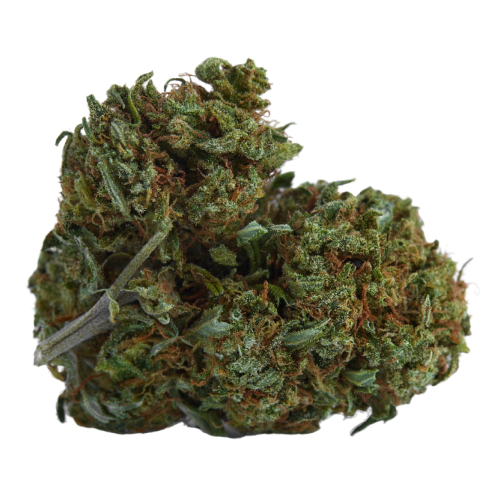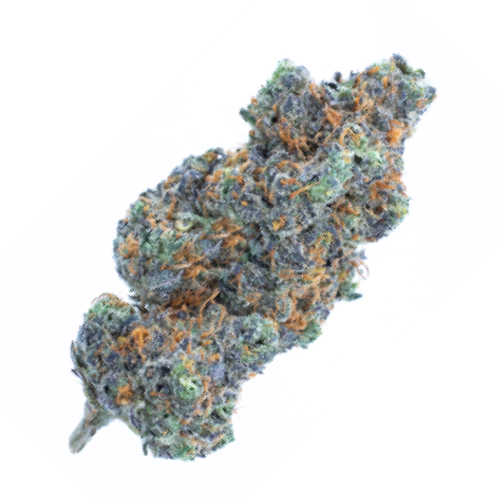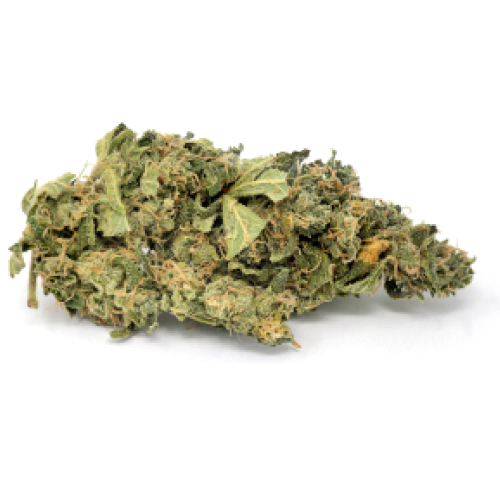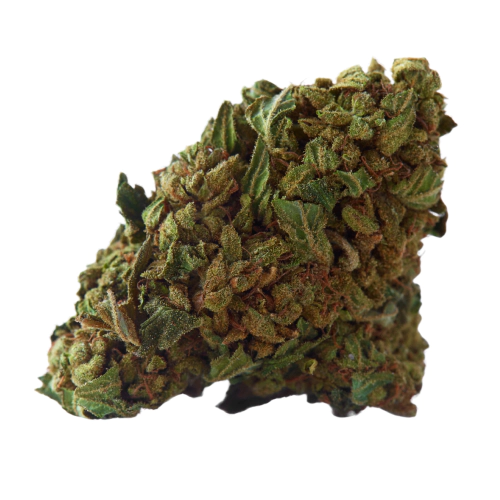THC 9.5 - 12%
CBD 0.01 - 0.15%
Effect Tingly
Flavor Strawberry
12 - 16%
0.42 - 0.67%
0.01 - 0.05%
Lime, Tea
Sleepy
The proportion of Indica and Sativa in the Florida Sundae strain is the same (50% / 50%). Therefore, it combines the most pleasing of both weed worlds harmoniously. Because the THC content of the strain ranges from 12% to 16%, you can safely choose this weed strain if you don't like intense cannabis or have minimal smoking experience. It has a low CBD level of around 0.5%. Other cannabinoids found in the marijuana composition add their properties to the strain's therapeutic benefits. The components for the Florida Sundae are as follows:
Florida Sundae's blend of cannabinoids mixed with terpenes. They determine the overall flavor and scent of weed smoking. The most prevalent terpenes in this marijuana are limonene and myrcene. Other terpenes that were found in this strain are listed below:
Flavor and Aroma
Because there are so many terpenes in the buds, the Florida Sundae fragrance will be widely diversified and present itself differently depending on the proportion of them in each plant. The first taste of smoking is usually associated with lavender&violet tea with added lemon — a light flavor with a delicate floral scent. Mint and pine needles will give your breath freshness and coolness. Several users reported a tropical aftertaste, while others noticed harsh diesel overtones or even the stink of skunks. Therefore, you'll have to give this strain a try to judge.
The majority of weed fans who have experienced Florida Sundae agree that it is an excellent pick for social occasions such as parties or meetings. You'll be able to communicate and giggle for a while and be happy and peaceful. Also, it gives you the possibility to continue your activities at a relaxed pace while you stay organized. It is beneficial for persons who work in intellectual and creative areas because it stimulates and awakens inventiveness.
Usually, the increase in activity gradually settles down and feeling sedated, you might want to nap. This cannabis is used to treat a variety of pains, including PMS, migraines, phantom limb pain, muscle spasms, and more. Also, if you've lost your appetite, Florida Sundae can be helpful. Somebody who struggles with the following conditions will benefit from this strain:
Some side effects may occur in users who are very sensitive to THC or who have overdosed. The following is a list of them:
Remember that adverse outcomes are usually mild and undetectable.
The Florida Sundae marijuana strain is ideal for weed enthusiasts who wish to try their hand at gardening for the first time. This breed may be grown both indoors and outdoors. The plant's height at the apartment ranges from 30 to 60 inches, but its outside height varies from 60 to 80 inches.
After flowering between the 54th and 62nd days of growth, the plant will be ready to harvest in nearly 59 days. One bush can yield up to 400 grams to the gardener.
| THC | Tetrahydrocannabinol, or THC, is a major cannabis chemical compound. It is a psychoactive element that stimulates dopamine release and induces euphoria or happiness. THC-rich strains may be helpful with such conditions as lack of appetite, chronic pains , etc. It is considered to be the primary active marijuana component. | 12 - 16% |
| CBD | Cannabidiol, or CBD, is a major compound in cannabis, which is non-psychoactive. It is also proved to counteract the side effects of the second major component THC. CBD is widely used for medicinal purposes in rubs, oils and so on. It is helpful in muscle pain cases, may treat arthritis and migraines. Even Greeks used it against pain, while Queen Victoria applied it to get rid of menstrual cramps. | 0.42 - 0.67% |
| CBC | Cannabichromene, or CBC, is a minor cannabinoid, meaning that its quantity in cannabis is quite little. Though it has the same origin as CBD and THC, it is different in functions. Without any psychoactive effects, it is an efficient cannabis compound in combating acne and depression. CBC produces analgesic, antibacterial and anti-inflammatory effects. | 0.16 - 0.27% |
| CBG | Cannabigerol, or CBG, is one of the minor cannabis compounds in adult plants. On the other hand, young ones contain a lot of this antibacterial and anti-inflammatory component. During the growth, CBG is converted into different cannabinoids, mostly THC and CBD. The compound itself increases appetite and decreases eye pressure. | 0.01 - 0.05% |
| CBN | Cannabinol, or CBN, is a trace element in cannabis that is considered to be mildly psychoactive. It appears from oxidation THC, exposed to light and heat. CBN is mostly contained in old cannabis and in traditional hashish. It is effective against insomnia, bacterial infections and appetite loss. | 0.24 - 0.44% |
| THCV | Tetrahydrocannabivarin, or THC-V, is a compound contained in cannabis in trace amounts. Even though it is close to THC molecularly, it is different in effects. This compound may be psychoactive only in large amounts. THC-V reduces blood sugar, controls appetite, stimulates bone growth, etc. African Sativa strains are the richest in THC-V. | 0.03 - 0.32% |
| Carene | Carene (also known as Delta-3 carene) is a terpene found in rosemary, lemons, pines, and cedars, offering citrusy and cypress aroma. Studies on mice showed that carene provides anti-inflammatory effects, as well as promotes bone health and chronic pain relief. | 0.04% |
| Pinene | Pinene is one of the most widespread terpenes in nature, found in pine trees, basil, nutmeg, parsley, and rosemary. Cannabis containing terpene (alpha-pinene or α-pinene) boasts a strong pine scent. Pinene is responsible for anti-inflammatory, pain-relieving, and anti-anxiety effects. | 0.06% |
| Myrcene | Myrcene (also known as β-myrcene) is one of the most common terpenes found in cannabis, representing more than 20% of the modern marijuana terpene profile. Myrcene has a distinct earthy, musky flavor, resembling cloves. It is responsible for calming and soothing effects of weed. Myrcene is also found in hops, thyme, mango, lemongrass, guava melon. | 0.3% |
| Humulene | Humulene (also known as α-humulene) is one of the major terpenes found in cannabis, contributing to woody, earthy, spicy, herbaceous, and, mainly, floral aromas of cannabis. Used in modern medicine, humulene offers anti-inflammatory, antibacterial, and appetite suppressant effects, which have been well-researched by pharmaceutical companies. | 0.07% |
| Limonene | Limonene (also known as d-limonene) is the second most common terpene in nature and the third most common terpene in cannabis. It has a powerful citrus aroma and can be found in all citruses, including lemons, oranges, grapefruits, limes, juniper, etc. Limonene is known to elevate moods and provide anxiety, depression, and stress relief. | 0.18% |
| Linalool | Linalool (also known as beta linalool, linalyl alcohol, linaloyl oxide, and p-linalool) is one of the rarest terpenes found in cannabis, mostly in small quantities. Linalool is known for its spicy and lavender aroma, bringing relaxation and calming effects. It is also said to provide anti-inflammatory and analgesic properties that can be useful for athletes. | 0.07% |
| Pulegone | Pulegone is a less-common terpene found in peppermint and catnip, for example, with a sweet and minty aroma. In small amounts, pulegone could be found in some cannabis strains. It is reported to offer anxiety-relieving effects, increased cognitive performance, and sedative properties. Could remove dizziness. | 0.1% |
| Nerolidol | Nerolidol (also known as trans-nerolidol) is a terpene found in jasmine, tea tree, and lemongrass, as well as in some cannabis strains. Nerolidol has a distinguished floral aroma with notes of citrus, apples, and rose. The terpene has sedative, anti-anxiety, antimicrobial, anti-parasitic, anti-oxidant, and pain-relieving properties. | 0.09% |
| Terpinolene | Terpinolene is one of the most common terpenes found in cannabis; however, It's usually presented in small quantities. Is responsible for piney, floral, herbaceous, and even a little bit citrusy aroma of cannabis. Terpinolene can be found in lilacs, nutmeg, and cumin. In cannabis, terpinolene contributes to the sensation of "freshness." Has the potential to reduce the risk of heart diseases. | 0.03% |
| Phellandrene | Phellandrene (also known as alpha- and beta-phellandrene) is one of the rare terpenes found in cannabis with antihyperalgesic and antidepressive properties. Phellandrene contributes to a minty, woody, and mildly citrus aroma in cannabis. Previously confused with limonene and pinene, phellandrene was eventually distinguished as a separate terpene common for eucalyptus. Also, it could be found in mint, dill, black pepper, cinnamon, parsley, pine, and lavender. | 0.07% |
| Total terpenes content | 1.01% |
THC 9.5 - 12%
CBD 0.01 - 0.15%
Effect Tingly
Flavor Strawberry
THC 23.5 - 24%
CBD 0.62 - 0.82%
Effect Uplifted
Flavor Sweet
THC 14 - 17%
CBD 0.05 - 0.75%
Effect Creative
Flavor Apricot
THC 14.6 - 16.6%
CBD 0.35 - 0.61%
Effect Sleepy
Flavor Pine
THC 15.5 - 22%
CBD 0.02 - 0.19%
Effect Uplifted
Flavor Pear
THC 16 - 25%
CBD 0.65 - 0.93%
Effect Happy
Flavor Cheese
THC 8 - 14.75%
CBD 0.04 - 0.42%
Effect Sleepy
Flavor Apricot
THC 17 - 18.67%
CBD 0.58 - 0.93%
Effect Giggly
Flavor Sweet
THC 15.5 - 24%
CBD 0.4 - 1.07%
Effect Talkative
Flavor Grape

THC 18 - 20.4%
CBD 1.5 - 1.87%
Effect Relaxed
Flavor Mint

THC 13 - 16%
CBD 0.11 - 1.07%
Effect Focused
Flavor Pear
THC 22.5 - 25.5%
CBD 0.07 - 1.25%
Effect Happy
Flavor Tropical
THC 13.5 - 16.5%
CBD 6.02 - 7.98%
Effect Uplifted
Flavor Mint

THC 18.5 - 21.5%
CBD 0.32 - 0.82%
Effect Hungry
Flavor Pine
THC 31 - 33%
CBD 0.41 - 0.56%
Effect Relaxed
Flavor Spicyherbal

THC 19 - 23.5%
CBD 0.37 - 0.74%
Effect Relaxed
Flavor Blueberry
THC 3 - 6%
CBD 6 - 17%
Effect Tingly
Flavor Honey
THC 17.5 - 21.5%
CBD 0.08 - 0.97%
Effect Creative
Flavor Honey
THC 19 - 25%
CBD 0.06 - 0.33%
Effect Tingly
Flavor Sage
THC 11.41 - 16.4%
CBD 0.02 - 0.29%
Effect Calm
Flavor Lemon
Be the first and share your opinion
Write a Review